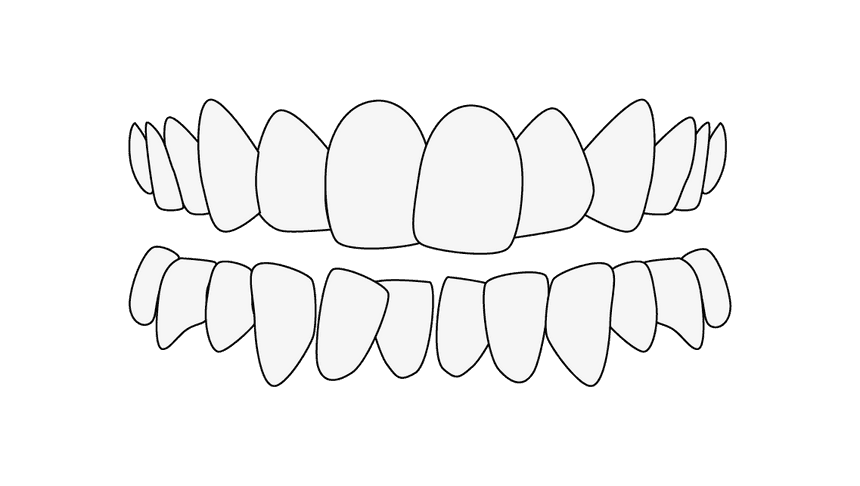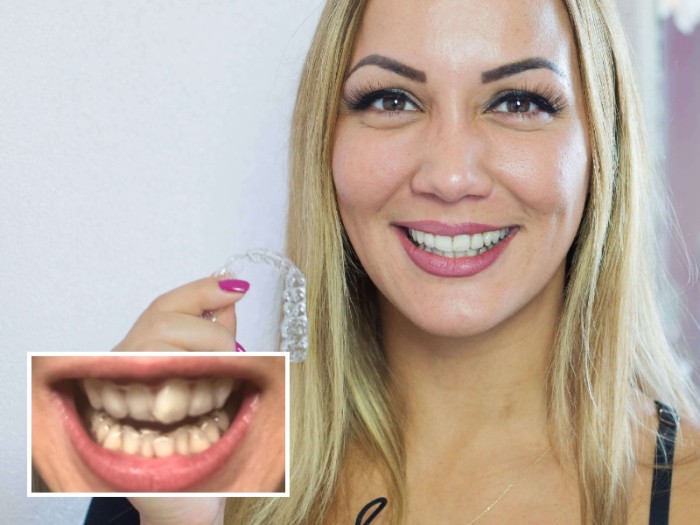
Very few people have perfectly straight teeth. Misaligned teeth, such as crowding, are common. Many misalignments are stopped or steered in the right direction during jaw growth in adolescence. However, during adolescence, misalignments are only covered by health insurance if the misalignments are at least class 3 of the orthodontic indices. This means that less complex misalignments are often not treated at all, as the costs of treatment have to be borne by the patient. This is one reason why many adults still suffer from crooked teeth.
What is crowding?

Crowding means that there is not enough space in the jaw for all the teeth. That means the teeth either do not grow out completely or are crooked or rotated in the jaw due to the lack of space. This not only has functional effects, but is often perceived as unaesthetic, depending on the severity.
Primary crowding
Primary crowding is hereditary. In this case, the teeth and the jaw do not fit together. This means that the teeth are too big for the jaw or the jaw is too narrow for the teeth.
Secondary crowding
Secondary crowding occurs during the transition from milk teeth to permanent teeth. If the side teeth fall out too early, the first permanent molar moves too far forward and thus causes a lack of space for the front and side teeth that come in later.
Tertiary crowding
Tertiary crowding is also referred to as adolescent crowding, because it usually develops after the age of 20. The reason for crowding is delayed growth of the lower jaw. This leads to a shifting of the teeth. Even if the teeth were completely straight before, tertiary crowding can occur.
Negative effects of crowding
If the teeth remain in the jaw or are not in the right place in the jaw, this can lead to inflammation or damage to the roots of neighbouring teeth and cause pain. Dental hygiene often suffers as a result. The crowding leads to increased chance of cavities and periodontitis, as the spaces between the teeth are difficult to reach with a toothbrush and dental floss.
Correcting crowding for adults
In addition to tertiary crowding, adults can also develop crowding if retainers were not used after orthodontic treatment to maintain the teeth. While jaw growth is usually stimulated in children and adolescents if the jaw is too small or the teeth are too large, growth stimulation is no longer possible for adults. Fortunately, there are also treatment options for adults to straighten crooked teeth caused by a crowding.
Clear aligner

If the crowding is not too pronounced, the teeth can be corrected very easily and quickly with DrSmile aligner. The almost invisible aligner shifts the teeth step by step into the correct position. To prevent regression, a retainer is used after successful treatment. The duration of treatment with the clear aligner depends on the complexity of the initial condition. Minor misalignments can be corrected within a few months.
Teeth grinding
In the case of minor crowding or a lack of space, it may be sufficient to carefully grind the teeth from the side. This only happens in the tenths of a millimetre range, however, the orthodontist creates few millimetres of space when grinding several teeth and can thus fix the crowding. After grinding, the teeth are polished and fluoridated, so the treatment is harmless to the tooth enamel.
Tooth extraction
The last option to eliminate crowding is to extract one or more teeth. However, this option is only considered by an orthodontist if there is a severe lack of space or if there are excess (too many) teeth. With modern treatments nowadays, tooth extraction due to crowding has become very rare.
Treatment Cost
Even though the treatment can be pricey, the prices differ greatly. However, the changed attitude to life with beautiful straight teeth shows that an investment is definitely worthwhile. DrSmile aligner treatment starts at £29 per month. Together we will find out whether your misaligned teeth are suitable for aligner treatment in a suitability test.
Find your city ...
Booking is not available for this location